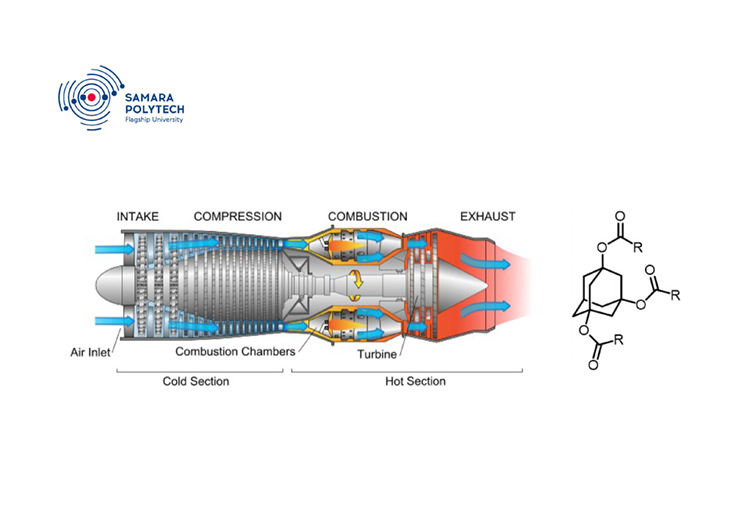Adamantane boom

The history of gas turbine engines is the history of increasing operating temperatures. Despite all the technological difficulties, such engines can be made to work in an increasingly intense thermal regime. However, in this case, it is necessary to change not only the design, but also the fuels and lubricants. When fuel is not a question, oil is a different thing. The engines of the new type require the use of oils of exceptional quality – HPC (High Performance Capability Class), possessing high performance characteristics. Thermal (more than 240° C) and thermo-oxidative stability is of primary importance.
Low thermal stability of the oil leads to the formation of plaque on the inner surface of the pipelines. This causes a decrease in the supply of oil to the engine units, its possible breakdown, or stagnation of the oil, an increase of its level, pressure, and leaks. Oils of the HPC class in terms of thermo-oxidative stability are 1.5-2 times higher than the oils of the SPC class (Standard Performance Capability Class). This means longer engine oil life and reduced frequency of oil changes.
API (American Petroleum Institute) Group V oils have the highest performance required in the most severe conditions. Therefore, most often the V group of oils becomes the basis for lubricants used in aircraft gas turbine engines. One of the types of oils in this group is oils based on esters obtained from carboxylic acids and alcohols of various structures by the esterification reaction. Esters are successfully used as bases or additives to improve the performance properties of various types of oils: motor oils, including premium oils, transmission oils, expander oils, hydraulic oils etc.
In Russia, there are no high-temperature commercial oils for heat-stressed gas turbine engines that can operate at temperatures above 240° C. Therefore, there arises a problem of increasing the thermal-oxidative stability of the oil base by adding a component to its composition that increases this parameter. The solution is to use adamantane esters as an additional component.
There is a small number of substances in organic chemistry that chemists around the world have demonstrated enormous interest in. One of them is adamantane, the carbon skeleton of which is similar to the structural unit of a diamond. When studying oil from the Hodonin field, Czech chemists discovered a substance of the C10H16 composition, which has a faint camphor smell and an unexpectedly high melting point (269° C). This hydrocarbon was named “adamantane”, which means “invincible” in Greek (the ancient name for a diamond). When studying the properties of adamantane, it turned out that it is not only extremely thermally stable (up to 660° C), but it can also be easily converted into various functional derivatives. Then the “adamantane boom” started in organic chemistry. The working biography of adamantane includes several thousand functional derivatives, and studies of their physical and chemical properties have not lost their relevance yet.
In Samara State Technical University there is a scientific school which deals with the synthesis, functionalization and application of adamantane derivatives. Chemists of Samara State Technical University (http://organic.samgtu.ru/), using their scientific potential and accumulated experience in the chemistry of organic polyhedral molecules, have developed technologies for the production and expanded the raw material base of lubricants with improved parameters of thermal-oxidative stability and viscosity-temperature characteristics based on adamantane-containing esters.
“Adamantane derivatives are widely offered for use as fuels and lubricants and additives to them. Adamantane is a flawless unique molecule, because its structure is rigid and, at the same time, devoid of all possible spatial strains. The presence of an adamantane fragment increases the thermal stability of the substance and its resistance to oxidation. This is important when obtaining oils with improved performance characteristics,” says Elena Ivleva, Associate Professor of the Department of Organic Chemistry, Samara State Technical University.
Tests of thermal-oxidative stability and other physicochemical characteristics have shown that adamantаne-containing esters obtained from polycarboxylic acids or alcohols of the adamantane series are significantly superior to currently used oils for heat-stressed gas turbine engines and can provide long-term performance at temperatures above 240° C. The research results are published in specialized journals (doi 10.1134/S0965544119110082, doi 10.1134/S1070363218080091, doi 10.1134/S096554411808008X, doi 10.1134/S0965544117120040).